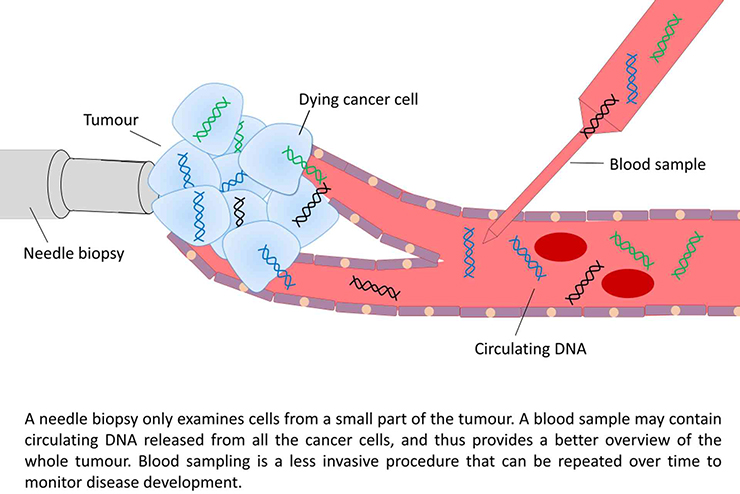Blood plasma has been shown to carry small amounts of fragmented circulating cell-free DNA of tumour origin (ctDNA). ctDNA is released to the blood stream through necrosis and apoptosis. By investigating ctDNA from cancer patients, the tumour heterogeneity can be better accounted for, since ctDNA in principle contains DNA representing every cancer cell within the body.
Blood samples can be regarded as a non-invasive “liquid biopsies”, and by analyzing ctDNA, we can obtain real-time insight into the tumour’s genome. Also, serum ctNDA can thus be used to monitor disease progression.
As part of the Norwegian Cancer Genomics Consortium, our group collaborates with multiple groups in Norway to establish sequencing-based liquid biopsies analysis for research and clinical use. In 2014, our group has initiated a prospective study on circulating DNA in sarcomas (CircSarc). Plasma has been collected before and after surgery, and we are currently monitoring the patients over time, collecting plasma at routine controls and before and after each treatment cycle.
We aim to provide new insights into the clinical utility of liquid biopsies in soft tissue sarcomas, where somatic mutations in circulating cfDNA will be used to detect disease progression, monitor treatment response, study resistance mechanisms and possible therapeutic targets.
Patients are recruited at Oslo and Haukeland University Hospitals.
